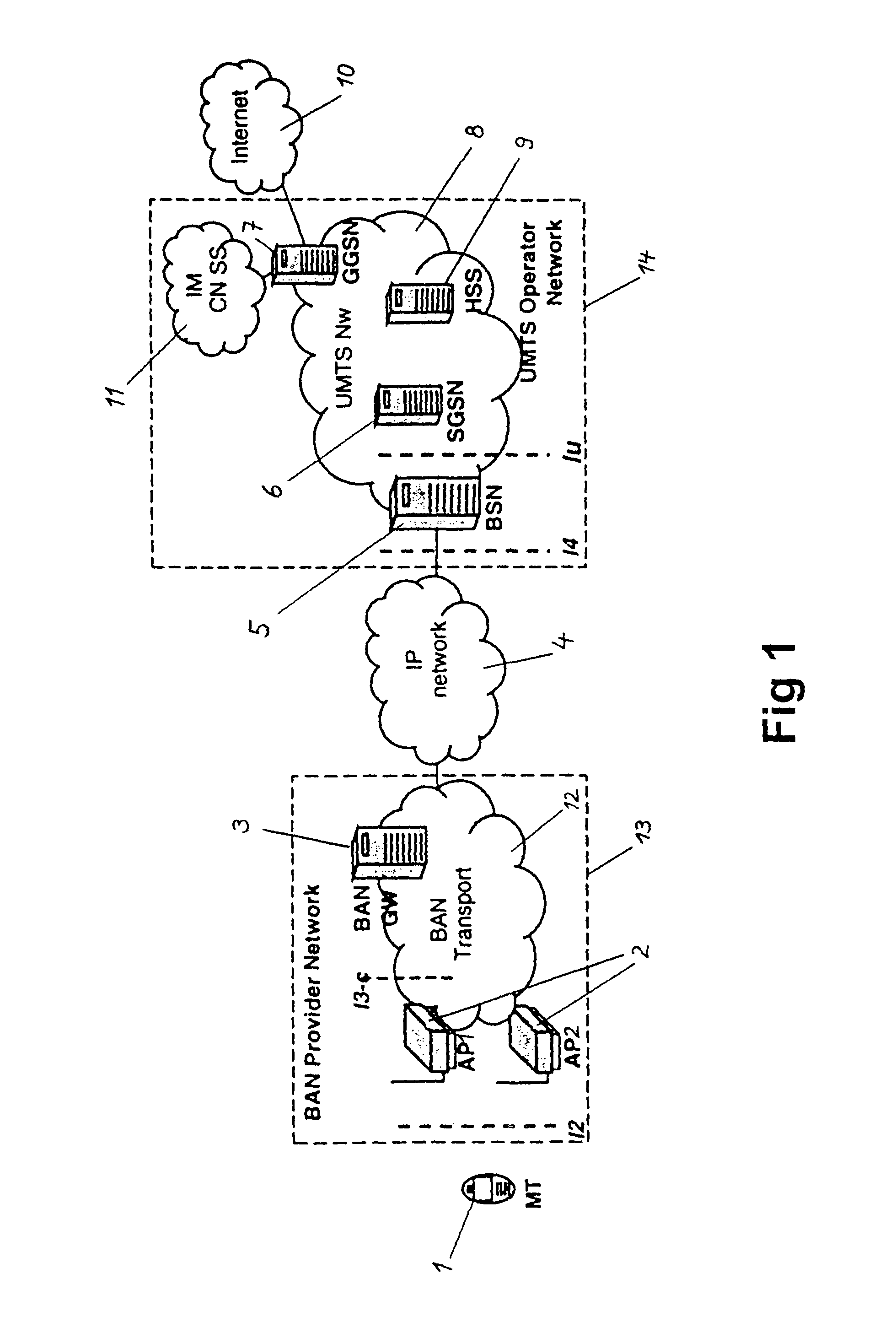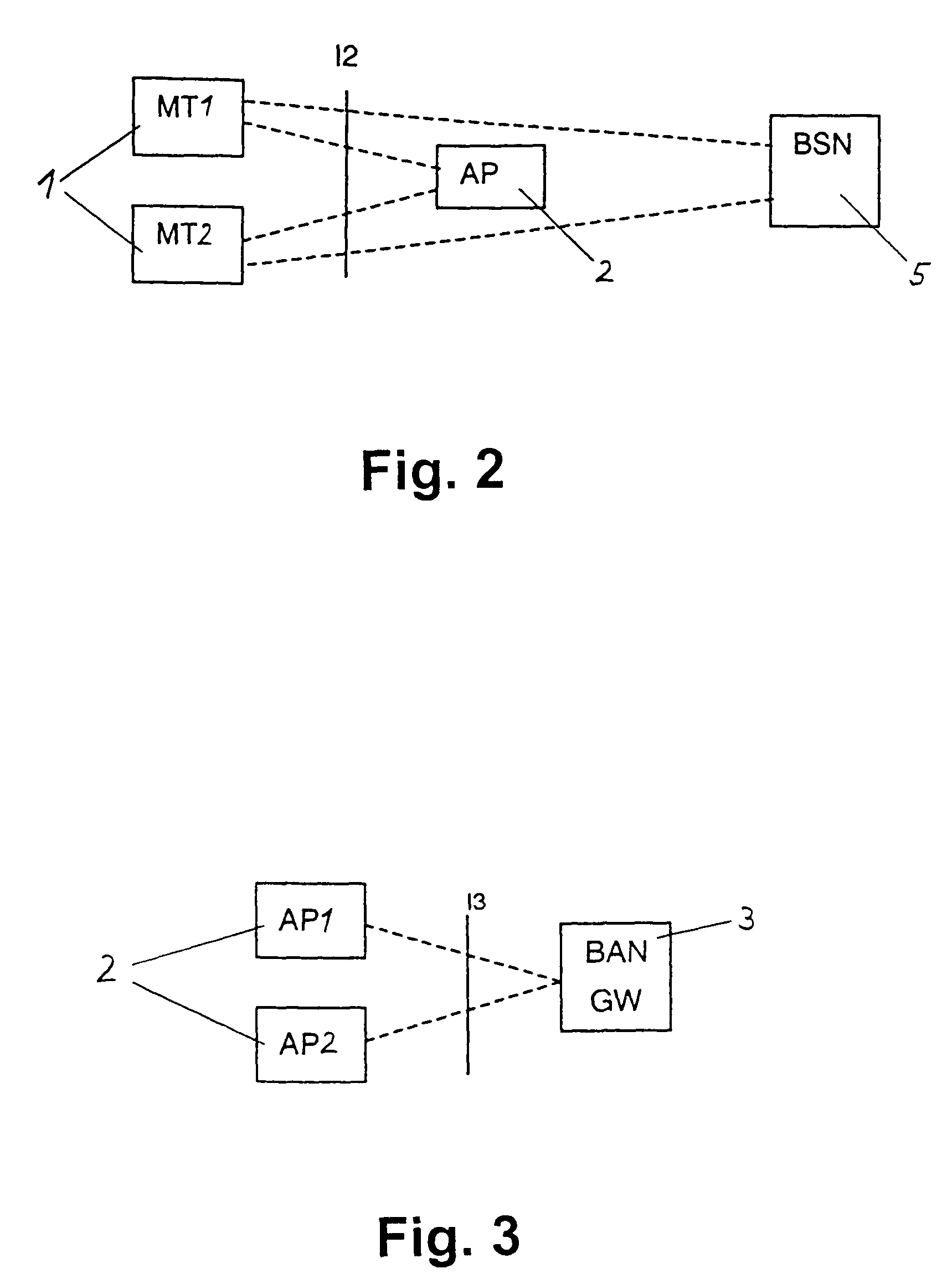Access system for a cellular network
a cellular network and access system technology, applied in the field of access system for a cellular network, can solve the problems of difficult to maintain a healthy and non-discriminatory competition environment, inefficient use of circuit switched connection, and early analog cellular modems that were unattractive to the market, and achieve low cost, high bit rate radio extension, and increase the radio capacity available
- Summary
- Abstract
- Description
- Claims
- Application Information
AI Technical Summary
Benefits of technology
Problems solved by technology
Method used
Image
Examples
Embodiment Construction
[0079]In the following, the preferred embodiment of the method and system according to the present invention will be described on the basis of a wireless broadband UMTS based system in which independent broadband wireless access networks are introduced as alternative or additional radio access technologies for UMTS. Thus, such a UMTS over broadband radio system supports a seamless access to all UMTS services.
[0080]FIG. 1 shows a schematic diagram of the network architecture according to the preferred embodiment, wherein a broadband access provider network (BAN provider network) 13 is connected via an IP (Internet Protocol) network 4 to a UMTS operator network 14. The access system is usable for UMTS radio capacity enhancement in environments suitable to broadband radio. According to FIG. 1, the access system comprises one or a plurality of UMTS backbone networks 8 operated by a UMTS operator, and one or a plurality of broadband access networks 12 (BAN networks) operated by independe...
PUM
 Login to View More
Login to View More Abstract
Description
Claims
Application Information
 Login to View More
Login to View More - R&D
- Intellectual Property
- Life Sciences
- Materials
- Tech Scout
- Unparalleled Data Quality
- Higher Quality Content
- 60% Fewer Hallucinations
Browse by: Latest US Patents, China's latest patents, Technical Efficacy Thesaurus, Application Domain, Technology Topic, Popular Technical Reports.
© 2025 PatSnap. All rights reserved.Legal|Privacy policy|Modern Slavery Act Transparency Statement|Sitemap|About US| Contact US: help@patsnap.com



